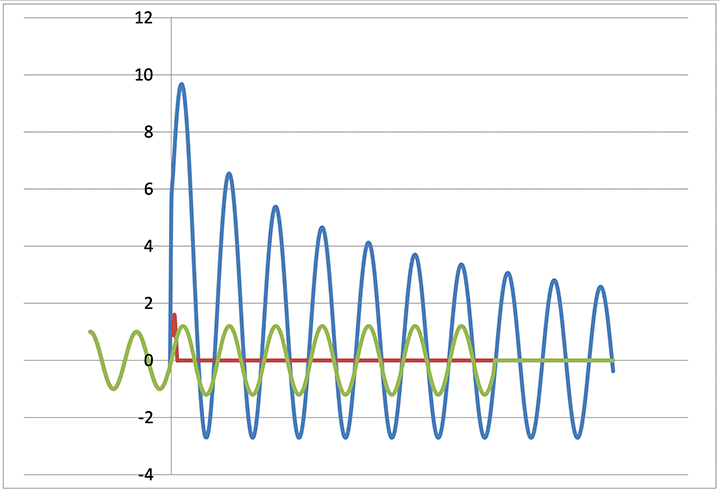Protection Issues to Address with the Growing Deployment of IBR
NREL researchers are actively addressing the protection issues associated with the growing deployment of inverter-based resources within power grids.
The surge in inverter use has given rise to protection issues due to the distinctive fault characteristics of these devices compared to traditional synchronous generators. Unlike synchronous generators, which can produce approximately six times their rated current during a fault, inverters can be programmed to respond to faults in diverse ways.
As depicted in the line chart illustrating fault currents, there are two notable inverter responses: one involves the inverter swiftly recognizing a fault and disconnecting, while the other entails the inverter sustaining its operation for seven cycles before disconnecting. Notably, both responses markedly differ from the behavior of synchronous generators, thereby necessitating adaptations in over-current protection strategies for the grid.

Traditionally, the substantial fault current generated by synchronous generators has served as a hallmark of certain fault types and formed the basis for time-overcurrent relay protection. Protective relays can detect these high fault currents and trip circuit breakers to safeguard grid components. However, inverter-based power sources deviate from the fault characteristics of synchronous generators, typically providing only a slight excess of rated output current. Consequently, in inverter-dominant systems, protective relays may fail to detect faults.
On the flip side, inverters exhibit the capability to swiftly respond to grid disruptions and disconnect from the grid, averting thermal overloads on grid components. A distinctive feature of inverters is their programmable fault current, which allows them to either instantaneously sense a fault and cease current production within a quarter of a cycle or continue providing current for multiple cycles throughout a fault condition.
Also Read About –
Power Hardware-in-the-Loop and Grid Simulation
Enhancing Fault Current Solutions and Grid Protection Strategies
One potential remedy for the lack of high fault currents is the incorporation of synchronous condensers to supply fault currents. Synchronous condensers are machines that exclusively furnish reactive power but can mimic the inertia and fault characteristics of synchronous generators. Beyond fault current supply, synchronous condensers deliver two valuable benefits to the system: mechanical inertia and voltage control. Consequently, many integration studies have explored the possibility of repurposing retiring thermal plants into synchronous condensers for these functions. Another option involves the reevaluation of overcurrent protection strategies in favor of more advanced protection schemes that employ methods such as current differential relaying to detect and clear faults.
Additionally, grid protection relies on specialized relays that monitor the Rate of Change of Frequency (ROCOF). ROCOF relays’ controllers analyze frequency derivatives to identify grid faults. However, with diminishing system inertia, rapid fluctuations in frequency during abnormal events may necessitate adjustments to ROCOF settings or even the reconsideration of their use.




